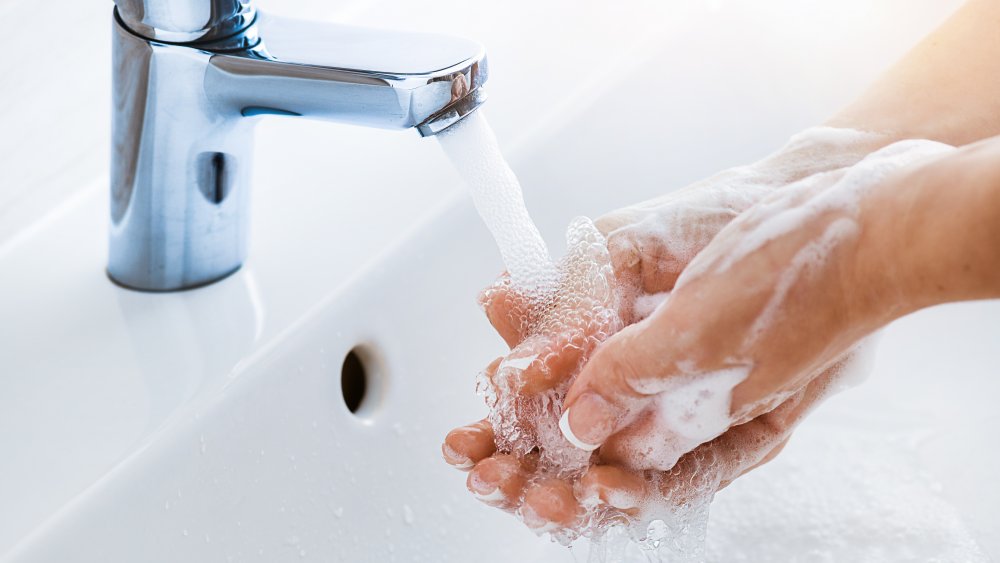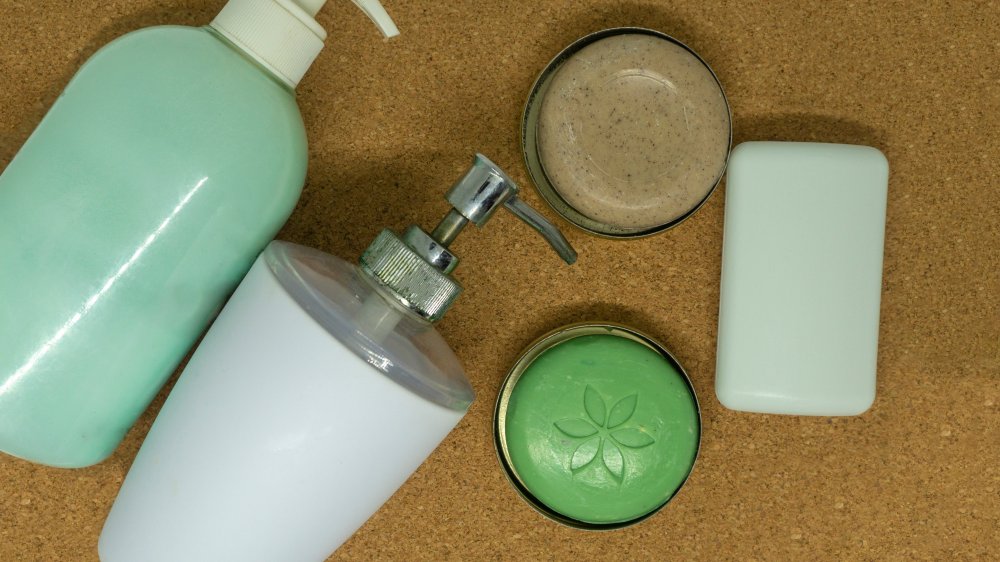Bar Soap Vs Liquid Soap: Which One Is Better For You?
Every time you step up to a sink and wash your hands, you might be wondering which kind of soap is more effective. Should you be using bar soap or liquid soap?
The CDC says liquid soap and bar soap are equally effective in getting rid of germs. Liquid soap is easier to share with other people, and that's why public places provide it instead of bar soap. The CDC also mentions that studies have not found any added benefit to using antibacterial soap, so regular soap works just fine. The FDA requires soap companies to prove that their antibacterial soap works better at getting rid of germs than regular soap (via Harvard University).
When you wash your hands with soap, you're creating friction that eliminates microbes, dirt, and grease (via CDC). Wash your hands for at least 20 seconds, making sure you get every part of your hand, and make doubly sure you're not washing your hands wrong.
Pros and cons of liquid vs bar soap
Since bar soap and liquid soap are equally effective, it all comes down to personal preference. Let's look at the pros and cons of each one.
Bar soaps are better for the environment since there's less plastic involved (look for bar soap packaged in cardboard boxes that can be recycled). They are also (usually) more cost-efficient than liquid soap.
However, bar soap has a few cons. It's messier than liquid soap, and bar soap can dry out your skin more than liquid soap because of its high pH levels, according to a 2014 study published in the Indian Journal of Dermatology. That's why you'll see the soap itself dry and crack.
As far as liquid soap goes, it has its benefits as well. It keeps a tidier space than bar soap, and it's convenient and easy to use. Liquid soap also comes in a variety of scents.
Liquid soap does have cons, though. It usually costs more than bar soap, and it's not as good for the environment because of the plastic that's used in its packaging.


